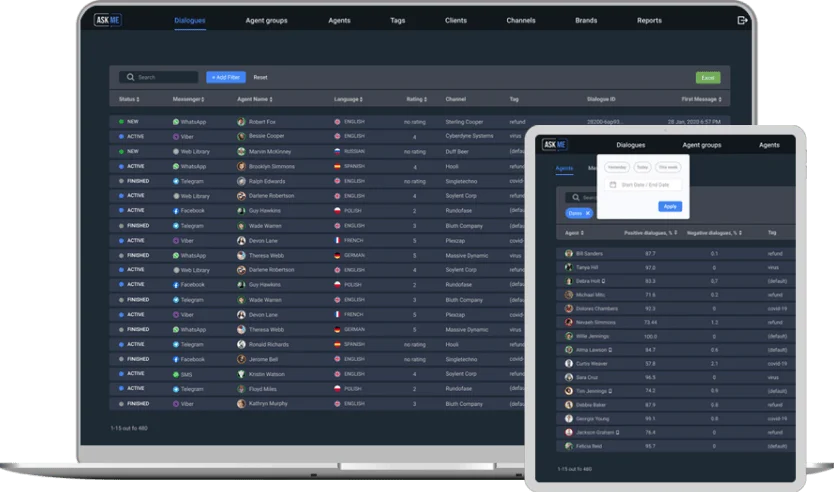It is more commonly used for large scale projects with many developers. At this step, desired features and operations are detailed, including screen layouts, business rules, process diagrams, pseudocode, and other deliverables. The Lean process is about working only on what must be worked on at the time, so there’s no room for multitasking.

It’s worth noting that each project participant plays an important role across the SDLC and they all have a direct impact on the overall wellbeing of projects. Some «process models» are abstract descriptions for evaluating, comparing, and improving the specific process adopted by an organization. A configuration management system shall be implemented during development and implementation. The Forensic Laboratory configuration management system development life cycle process is defined in Chapter 7, Section 7.4.5. The execution component is responsible for the final deliverable of the project and is built around pure code development, system configuration, or a combination of both. Many organizations subdivide their SDLC methodologies into a larger number of phases than the five referenced in NIST guidance, potentially offering closer alignment of SDLC phases and corresponding RMF tasks.
Methodologies
There are also alternatives to the types of SDLC methodologies detailed further below. RAD offers implementation of CASE tools, joint application development, and prototyping. The advantages of RAD are active user involvement, a faster approach, and https://www.globalcloudteam.com/ reduced development cost. Some development teams consider development and testing to fall under a single-phase, others prefer to break it into two sub-phases. Irrespective of the choice a development team makes, the whole process remains the same.

System analysts research problems, find or develop solutions, recommend a course of action, communicate and coordinate with stakeholders, choose resources, and design action plans to reach a goal and meet predefined requirements. They are experts at studying a system, process, or procedure to come up with the best solutions. The SDLC doesn’t necessarily stop once the system is out living and breathing. Setting a strong foundation and defining a clear understanding of a project is crucial to the success of any information system. For this reason, the SDLCs first phase is planning where stakeholders and all parties involved in the project participate to clearly define requirements and the nature of what the information system will need to solve.
Software project management
There is a lot of literature on specific systems development life cycle (SDLC) methodologies, tools, and applications for successful system deployment. Not just limited to purely technical activities, SDLC involves process and procedure development, change management, identifying user experiences, policy/procedure development, user impact, and proper security procedures. Books such as David Avison and Guy Fitzgerald’s Information Systems Development and Alan Daniels and Don Yeates’ Basic Systems Analysis, delve into the intricacies of information systems development lifecycles. This article will provide an in-depth analysis of the history, definition, phases, benefits, and disadvantages, along with solutions that support the system development life cycle.
- In this guide, we’ll go through each stage and model to give you an overview of what becoming a software developer entails.
- Within the SDLC framework, the Information System Architect takes on highly active roles during the planning, analysis, and design phases, and acts as a companion role in all other phases of development.
- It can also include adding new features or functionality to a current product.
- In this phase, all the documentation that the team created in the analysis phase is used to develop the actual technical documentation of the project.
- Adaptive and fast by nature, the RAD model puts less emphasis on planning and more on adaptive tasks.
Well, for any system to work as intended, it needs to be thoroughly tested and tested again until the results match the expected outcome. As a result, each stage will have roles of project participants who will take an active role in their tasks. In this article, we will focus on the main project roles which include the project manager, analyst, architect, developer, tester, and DevOps.
Developers on AWS
Looking at this question asked on StackExchange, you will know that several experts believe that the Waterfall model was never meant to be a real, working SDLC methodology for developing software. Each phase or iteration in this model produces a newer, better version of the software under development. A rinse and repeat approach is followed until the final software comes into shape. After training, systems engineers and developers transition the system to its production environment. Once a system has been stabilized through testing, SDLC ensures that proper training is prepared and performed before transitioning the system to support staff and end users. Training usually covers operational training for support staff as well as end-user training.
The life cycle model or paradigm defines the overall organization and, as a rule, its main phases and principles of transition between them. The methodology or method determines the set of actions, their detailed content, and the roles/responsibilities of specialists at all stages of the selected software development model. We’re living in an Agile world where the Agile methodology has taken over most software development projects as it helps create products iteratively and flexibly to navigate and manage requirements of information systems with ease and effectiveness. The Agile methodology can work in harmony with the SDLC process by pairing phases with iteration frameworks. Cloud computing is one example where trust and trustworthiness39 between cloud service providers (CSPs) and a federal agency is critical for the effective application of the NIST RMF. The Federal Risk and Authorization Management Program (FedRAMP) “introduces an innovative policy approach to developing trusted relationships between Executive departments and agencies and cloud service providers (CSPs)” [11].
Iterative Software Development Life Cycle
Disadvantages include complex project management and the risk development goes on indefinitely. SDLC is also an abbreviation for Synchronous Data Link Control and software development life cycle. Software development life cycle is a very similar process to systems development life cycle, but it focuses exclusively on the development life cycle of software. Application lifecycle management (ALM) is the creation and maintenance of software applications until they are no longer required.

SDLC or the Software Development Life Cycle is a process that produces software with the highest quality and lowest cost in the shortest time possible. SDLC provides a well-structured flow of phases that help an organization to quickly produce high-quality software which is well-tested and ready for production use. In contrast, Planned, linear style development can yield applications that do not meet the needs of end users even if they meet the stated requirements on paper.
Iterative and incremental
It’s characterized by a corresponding testing phase for each development stage. Like Waterfall, each stage begins only after the previous one has ended. This SDLC model can be useful, provided your project has no unknown requirements. Following each phase of a system development life cycle the team and project manager may establish a baseline or milestones in the process. The baseline may include start date, end date, phase/stage duration, and budget data. The SDLC methodology is sometimes referred to as the waterfall methodology to represent how each step is a separate part of the process.

Though inspired by the Waterfall model, where the testing is done at the end of the project, it differs in that it introduces testing at every stage of development. Fast failure is a notable aspect of it, and Agile features ongoing release cycles. Each of these features small changes over the previous release, with the product tested with each iteration. The system design specifications prepared in the designing phase serve as the input for the next i.e. fourth stage of the SDLC. During the designing phase, testers are required to form an apt testing strategy. Fundamentally, SDLC trades flexibility for control by imposing structure.
Management and control
It involves multiple processes, tools, and people working together to manage every lifecycle aspect, such as ideation, design and development, testing, production, support, and eventual redundancy. In traditional software development, security testing was a separate process from the software development lifecycle (SDLC). The security team discovered security flaws only after they had built the software. This led to a high number of bugs that remained hidden as well as increased security risks. In a DevOps model, Developers and Operations teams work together closely — and sometimes as one team — to accelerate innovation and the deployment of higher-quality and more reliable software products and functionalities. Discipline, continuous feedback and process improvement, and automation of manual development processes are all hallmarks of the DevOps model.

Comentarios recientes